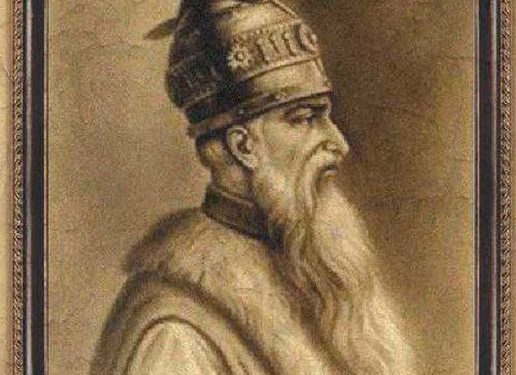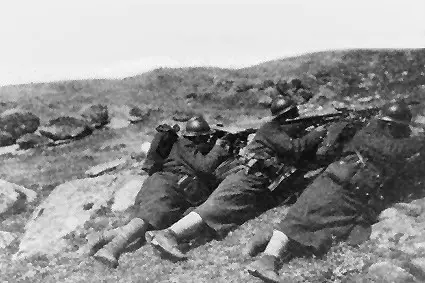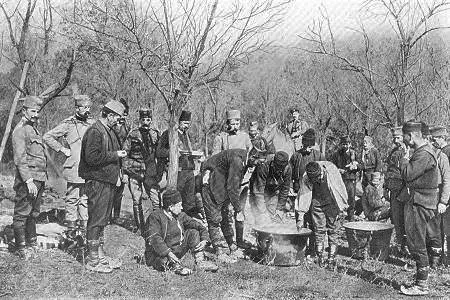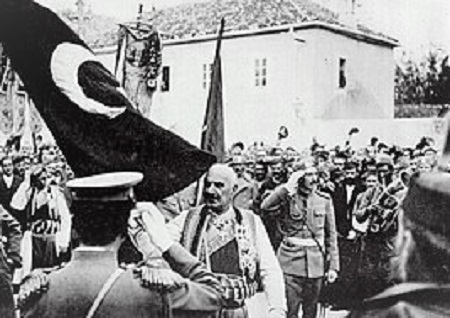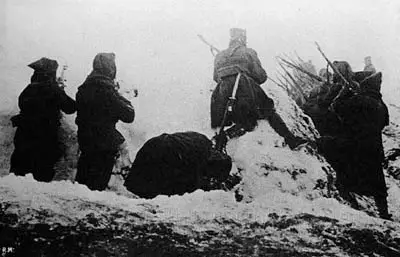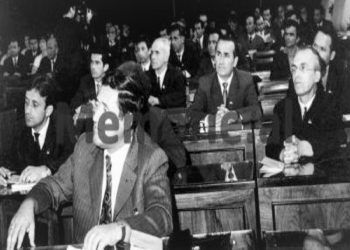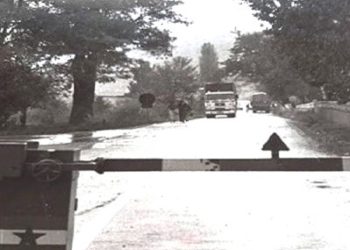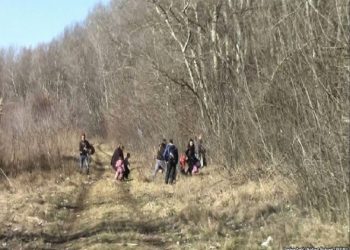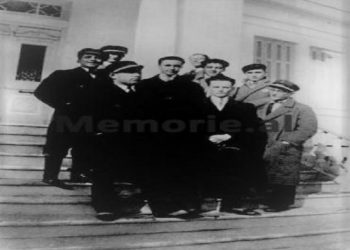From Bashkim Trenova
Part four
ALBANIANS ACCORDING TO THE SERBS
Memorie.al / “Serbs are descended from the Slavs, a large number of tribes who gave life to the Slavs. Knowledge about the origins of the history of the Slavs is modest and not so clear. Their name appears for the first time in the 6th century AD, when Byzantine writers start talking about the Slavs….”! (Dushan Bataković, Milan St. Protic, Nikola Samardžić, Aleksandër Fotic. History of the Serbian People. L’Age d’Homme. Lausanne. 2005. Pg. 3.)
Continues from last issue
– INSTEAD OF THE PROLOGUE – A PROJECT, TWO MEMORANDA AND AN ANALYSIS –
The Project or Nacertania of Ilia Garasanin – politician, prime minister of Serbia during the years 1852-1853 and 1861-1886:
From the Memorandum of the Academy of Sciences and Arts of Serbia
The physical, political, legal, cultural genocide of the Serbian people in Kosovo and Metohija is the most serious defeat that Serbia has suffered in its liberation wars, since the battle of Orasak in 1804 until the uprising of 1941.
The Serbs in Kosovo and Metohija do not only have a past embodied in important cultural and historical movements, but they also have spiritual, cultural and moral values. They have a native land, which has a historical existence. Violent actions, which over the centuries have reduced the Serbian population of Kosovo and Metohija, in our time lead to an undesirable conclusion.
The exodus of Serbs from Kosovo and Metohia, in socialist Yugoslavia, in terms of its size and character, surpasses all the previous stages of this great penetration of the Serbian people. Jovan Cvijic, at the time, estimated that during the migrations, from the great exodus under the leadership of Arsene Cernojevic in 1690 to the first years of this century, nearly 500,000 Serbs, including about 150,000 between 1876 and 1912, were forced to leave their homes under the pressure exerted by the brutal terror of the powerful local Bashibozuk Albanian.
During the last war nearly 60,000 Serbian settlers and natives were expelled, but then this wave of emigration experienced a real tide: during the last twenty years, nearly 200,000 Serbs left Kosovo and Metohija. What remains of the Serbian people is leaving the land at a steady pace and, as far as we know, driven by psychological, moral and physical violence and terror, is preparing for a final exodus.
In less than ten years, if a fundamental change does not occur, there will be no more Serbs in Kosovo, but there will be an ethnically pure Kosovo. The clear goal of the great Albanian racists already highlighted in the programs and actions of the League of Prizren from 1878 to 1881, will be fully achieved.
The fate of Kosovo remains a vital issue for the entire Serbian people…! Kosovo is not the only region where the Serbian people suffer from discrimination…!
The process is oriented towards the complete destruction of the national unity of the Serbian people…!
… Aggressive Albanian nationalism in Kosovo cannot be suppressed unless Serbia ceases to be the only republic whose internal relations are regulated by others…!
***
Olivera Milosavljevic
(Historian, professor of social history at the Faculty of Philosophy in Belgrade)
How Serbian national ideology has built the image of the Albanian enemy:
-Albanians today are considered, without question, as the biggest “enemies” of the Serbs!-
Although this can be attributed to political events and the unpleasant presentation of Albanians in the Serbian media, it is nevertheless necessary to delve into the reasons for the contempt with which they have been treated by Serbian writers and politicians. Serbian intellectuals today write about Albanians mainly in the framework of a stereotype about their ingrained hatred of – and desire to destroy – Serbs, which is said to stem from their very nature, characterized by primitivism and banditry.
For their part, earlier authors have sought to prove the supposed inability of Albanians to build an autonomous state, due to their very nature. According to them, the Albanian “tribes” did not need a state and were not capable of becoming a nation. Therefore, these authors saw the solution, in accordance with the political program of:
1-Memorandum of the Serbian Academy of Sciences and Arts/Belgrade, September 1986. DIJALOG, No. 2/3(Sup), September 1992. (See also Memorandum of the Academy of Sciences of Serbia (1986). Ethnic Cleansing, Historical Documents on a Serbian Ideology, Paris 1993, Fayard).
Serbia, in a benevolent colonization which, incorporating the Albanians and their lands into the Serbian state, would prepare them for a civilized existence. Contemporary writings about Albanians generally include such stereotypes, repeatedly repeated over the last hundred years: that they are not a nation and that their lack of civilization prevents them from creating an independent state. This is where the claim that Skenderbeu was a Serb comes from.
Albanians hate Serbs
In the 1980s, the Albanian name was associated only with words such as genocide, terror, banditry, rape – any mention of this population in political and private relations had a negative charge. After Dimitrije Bogdanović’s book, ‘Knjiga o Kosovo’ (Book about Kosovo), published in 1985 by the Serbian Academy of Arts and Sciences (SANU), and his frequent television appearances, Serbian intellectuals wrote about Albanians only for said, in one form or another, that the Serbs of Kosovo were victims of a planned genocide.
Bogdanović was thus quickly left behind in this display of negative feelings towards the Albanians. In his book, Bogdanovic had revived the old thesis, according to which the Albanian colonization of Serbian lands in the 17th century, had left in memory the bloody violence suffered by the Serbs, which he elaborated through examples of acts of collective and individual terror: looting, massacres and expulsion of Serbs from their land, as well as the assertion that the basis of Albanian colonization would be the conversion of Serbs to Islam, accompanied by ethnic assimilation and brutal force.
According to him, the Serbian people thus became the victim not only of a chaotic movement, but of a pre-planned physical destruction. The expansion of this negative image of the Albanian people as a whole was achieved by portraying the Albanian political movement as aggressive, conquering, vengeful, conservative and nationalist, with the aim of destroying the Serbian people through murder, deportation and erasure of history and the seizure of Serbian lands, aimed at encircling and destroying the Serbs themselves. According to Bogdanović, the thesis of the Illyrian origin of the Albanians was racist, as it was used to realize a land claim. And, while writing about the settlement of the Serbs in the Balkans, at a time that he describes as Albanian prehistory, he mentions the ancestors of the Albanians without saying who they were.
According to historian and SANU member Radovan Samarxic, Albanians were expansionists already in the 16th century: they were unleashed by the Turks against the Serbs to drive a destructive wedge into the former Serbian lands. The Serbs were pushed back as a result of killings and looting, the burning of villages, the seizure of their lands and forced Islamization.
Also for the sociologist Marko Mladenovic, who at that time often appeared in the media, the genocide and apartheid practiced against the Kosovo Serbs are understandable and the history of the Illyrian origin of the Albanians is an archaeological fog built to claim the supposed lands of the ancestors prehistoric of today’s Albanians.
He insists that there were no Albanians in Kosovo before the 17th century and that they were not a majority there before World War II. The persecutors of the Serbs in Kosovo ranged from the “bashibozuks” to the “ballistas”, associated respectively with Islam and extreme nationalism. This circle of Serbian intellectuals never questioned the fact that Albanians used children for political purposes. Bogdanovic wrote that Albanian children were encouraged to attack Serbian children, while for Mladenovic; they were used to establish an Albanian numerical superiority.
A bishop of the Serbian Orthodox Church (SRC), Atanasije Jevtiq, insists that the goal of the Kosovo Albanians has always been: more land, more children and more weapons. He specifically emphasizes that; Albanian children have not only been manipulated, but feel a deep hatred towards everything Serbian and Christian in Kosovo. For this he blames their parents and teachers, as well as the primitive clan and the Muslim spirit.
While for Bogdanović, the Albanians were tools in the hands of the Turks, for Samardžić, they were tools of the institutions of the Holy See, which relied on them as people of low faith and honor, who could convert to Catholicism without much effort. In the portrait of the national character of the Albanians, Samarxhic talks about their barbaric nature, their fantastic reproductive powers, their abhorrent inhumanity and their bloody orgies.
During the 1990s, a model text, written by Miodrag Jovici, appeared in the SANU text collection: Serbs and Albanians in the 20th Century. Albanians appear here as “Arnauts”, that is, looting thugs, genetically ready for violence. Even for Jovicic, it is their Islamization that explains why the Turks gave the Albanians carte blanche to terrorize the Serbian population through the use of violence, looting and banditry.
Adopting the thesis that tradition and accumulated experience determine a biological predisposition in a nation, he argues that violence is part of the genetic makeup of all layers of the Albanian population, along with hatred of Serbs, and that their only flaw is that they are alive.
An approach to historical events such as debt repayment comes more directly to the fore here. Although Jovicič admits that in the Kingdom of Yugoslavia Albanians were not animals, who were companions of the regime, he nevertheless concludes that they had in no way paid the debt for what they had done to the Serbian people during the Turkish rule. In the same style of deserved and undeserved history, he notes that, given past experience, the Albanian minority simply did not deserve to have autonomy within Serbia.
On the contrary, Jovićič argues, many believe that in 1945 Albanians should have been placed in a special quarantine and given autonomy only after they had given sufficient evidence of their ability to coexist as civilized people. In short, even for Jovicic, Albanians are genetic enemies of Serbs and Serbia.
According to this author, Albanians feel an innate hatred towards Serbs and Serbia and their genocidal behavior has been present for centuries. He sees the solution to this problem as changing the ethnic composition of the province of Kosovo – returning all the Serbs who have left, creating new Serb colonies and freezing, for a time, the current autonomy.
Contemporary authors have also written about Albanian historical inferiority, about the open genocide committed against Serbs in the 19th century through looting, murder, rape and abduction of women, who were then forced to convert to Islam; for the ethnic and religious intolerance towards the Serbs, which was the basis of all the political movements of the “Arbanians”; for their aggressive and destructive fury directed against everything Serbian; for their behavior as aggressors and invaders.
Referring to the centuries-old relations between Albanians and Serbs, the thesis is supported that a barbaric and aggressive explosion of Albanian nationalism and separatism occurs whenever the demographic balance is disturbed, that this stems from the nature of the primitive clan society of Albanians and that in the persecution of to the Serbs, the Albanians were more radical and cruel than all the other neighbors of the Serbs, using the most brutal means, according to their Islamic-Turkish and fascist-ballistic tradition. (Dobrica Qosic, 1992).
These negative stereotypes about Albanians were elaborated as early as the second half of the 19th century, in books by Serbian authors based on some not very serious studies. The most widespread was the hatred of Albanians towards Serbs. Archimandrite Haxhi Serafim Ristic was among the first to speak of Albanians as the worst enemies of Christianity and the worst oppressors of the people.
Radosavljevic-Bdin, inspired by patriotic feelings, counting the weapons that the enemies (i.e. neighbors) of the Serbs had used in their joint work of destroying the Serbs, defined as the weapons of the Albanians; the cemetery, the gunpowder and the bullet. Haxhi-Vasiljevici considered the Albanians as: “the biggest enemies of the Serbs” (1906), “their sworn enemies” (1909); he claimed that Serbs considered Albanians as their worst enemies…!
Skanderbeg was a Serb!
The stereotype of Albanians as “urbanized” Serbs, although it seems to contradict the above, is in fact in perfect harmony with it, given the phenomenon of assimilation dealt with by this part of the Serbian intelligentsia. To begin with, contemporary writers manipulate the number of “urbanized” Serbs. According to Samarxhic, at the end of the 19th century, 30 to 40% of the Albanian population of Kosovo was of Slavic origin, a result achieved, according to him, by a real pogrom.
Meanwhile, for Mladenovic, two thirds of ethnic Albanians are of Serbian origin. Veselin Gjuretič, for his part, insists that the real figure is 80%. Earlier authors did not deal with numbers, but found other ways, mostly visual, to infer the Serbian origin of Kosovo Albanians: the alleged absence of certain physical characteristics present, for example, in Bulgarians.
The thesis that Skenderbeu was a Serb, stemmed both from the stereotype of the Serbian origin of Albanians, and from their inability to create a state. Its main objective was to explain this historical exception to the rule with the tribal and disorganized existence of the Albanians and their lack of desire to have a state.
Just as contemporary Serbian writers want to point out that Skanderbeg’s mother was from the Balšič (Balshaj – author’s note) family, which, they argue, makes him Serbian, earlier writers also felt compelled to insist on this argument.
For these authors, Skenderbeu was a Serb, just like his fellow soldiers; he was the last Serbian dynasty, which reigned over the lands inhabited by Serbs. Vladan Gjorgjevic, insisting that; Skanderbeg was a Serb, he wrote in an apologetic tone:
“In fact, it is rather shameful that we have to claim this one hero that the Albanians managed to win for so many thousands of years, because in our six centuries of wars from Kosovo to Kumanovo, we have won so many heroes that we could have done without this, but we must not allow history to be falsified for the sake of Albanians”. This is how other authors continued, repeating unanimously that Albanians should not claim Skenderbeu as their own, since he was not a full-blooded Albanian but at least half-Serb. Memorie.al
The next issue follows






